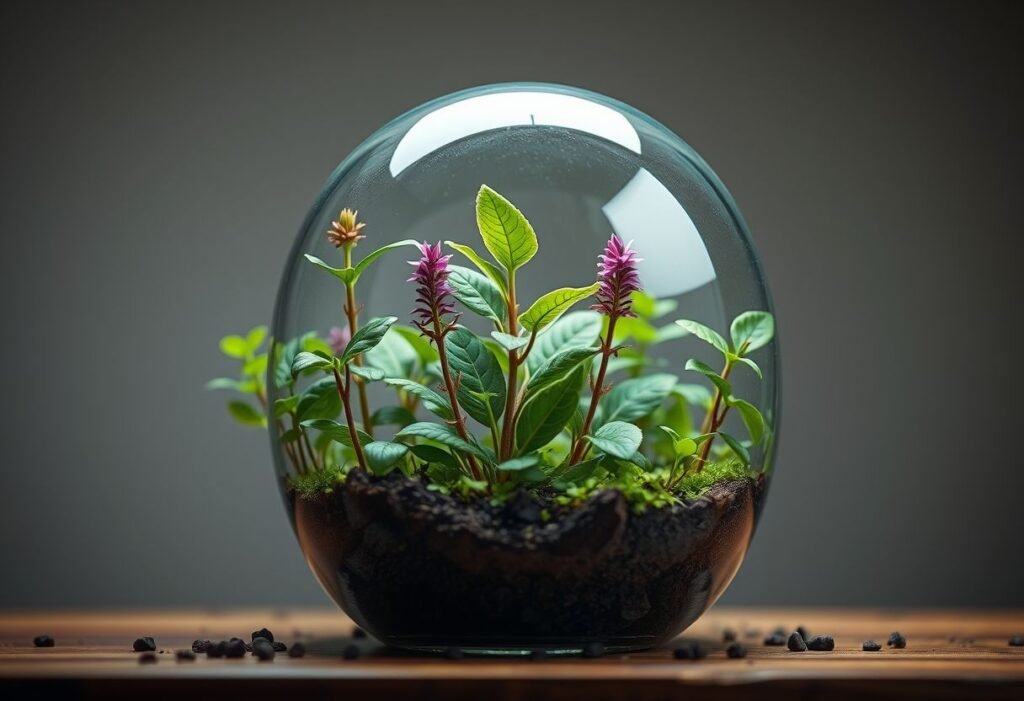Researchers have discovered that using ground glass as a plant growth medium can significantly enhance cultivation outcomes. This innovative approach not only addresses waste management but also opens new avenues for sustainable agricultural practices.
Ground Glass: A Revolutionary Addition to Agriculture
Traditionally, waste glass fragments have been a burden, often ending up in landfills. However, a recent study has highlighted the efficacy of ground glass particles when mixed with soil as a growth medium. This new method provides numerous advantages over using standard soil alone. The addition of glass enhances aeration and drainage, which are critical factors for healthy plant development. Moreover, the unique properties of recycled glass create an ideal environment for roots to flourish, leading to improved plant health and growth rates. This breakthrough primarily benefits urban agriculture, allowing for innovative solutions to common agricultural challenges.
Benefits of Using Recycled Glass in Plant Growth
The use of recycled materials in agriculture offers both economic and environmental benefits. Ground glass not only diverts waste from landfills but also reduces the need for chemical fertilizers, which can be detrimental to the environment. The study indicates that plants grown in a medium containing ground glass exhibited greater nutrient retention, resulting in healthier crops. Furthermore, using glass as a growth medium also helps reduce run-off and soil erosion, making it a sustainable choice for modern agriculture. This environmentally friendly alternative poses a compelling option for farmers looking to minimize their ecological footprint.
Enhanced Soil Properties with Glass Particles
Mixing ground glass with soil results in enhanced soil properties that can benefit various types of crops. The glass fragments increase the availability of drainage, helping to prevent waterlogging while ensuring adequate moisture retention. The incorporation of glass creates a more stable microenvironment for plant roots, which can enhance nutrient uptake and overall growth. This is especially important for high-value crops such as fruits and vegetables, where optimal growth conditions are necessary. Such advancements in soil science could revolutionize the way farmers approach crop cultivation.
Potential Applications of Glass as a Growing Medium
The potential applications of this glass-infused growing medium are vast. From urban rooftop gardens to large-scale commercial farms, integrating glass with traditional soil could alter conventional agricultural practices. For example, urban environments with limited arable land could benefit from utilizing glass-based systems to support sustainable farming. As cities continue to grow, finding innovative ways to maximize available space will be crucial. This method not only supports plant growth but also tackles the challenge of waste management, giving cities a greener and more efficient approach to urban agriculture.
Future Research Directions in Sustainable Agriculture
While the initial findings are promising, further research is needed to explore the long-term effects of using ground glass on different plants and soil types. Studies focusing on a diverse range of crops will help assess its adaptability across various agricultural conditions. Additionally, investigating the impact on soil microbiomes will be crucial in understanding how glass mixes influence soil health and crop yield. This research is a stepping stone toward mainstreaming sustainable practices in agriculture and ensuring food security as global challenges continue to evolve.
Conclusion: A Step Towards Sustainable Agriculture
Integrating ground glass into plant growth mediums represents a significant advancement in sustainable agricultural practices. By leveraging recycling opportunities, farmers can enhance growth while reducing waste and environmental harm. This innovative methodology provides a template for future agricultural research focused on sustainability and efficiency. As the agriculture sector continues to evolve, such breakthroughs are essential for meeting the demands of a growing population.
Disclaimer: The information provided in this article is for informational purposes only and does not constitute professional advice.





















